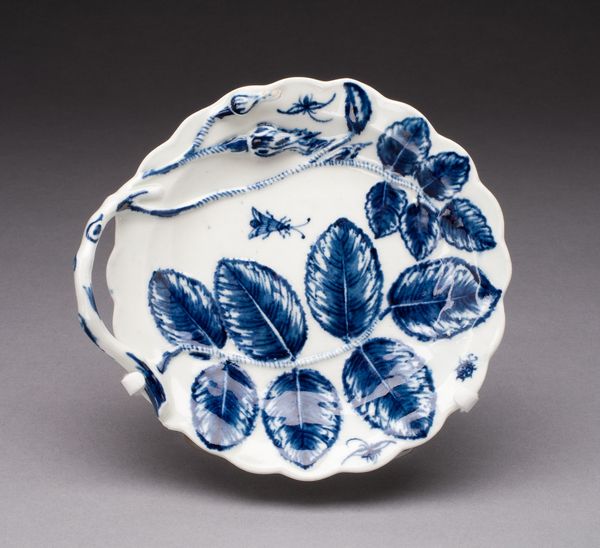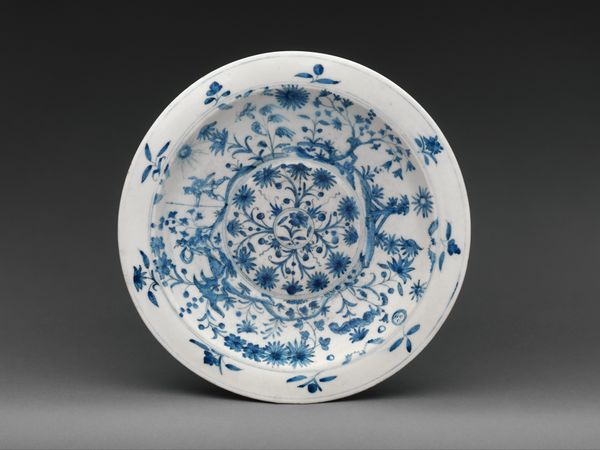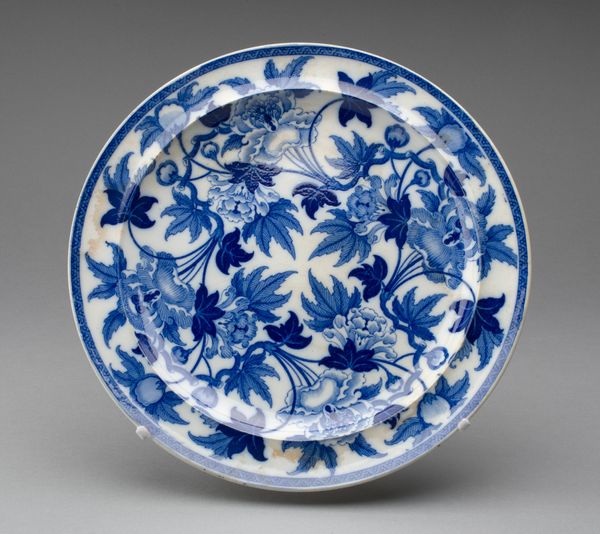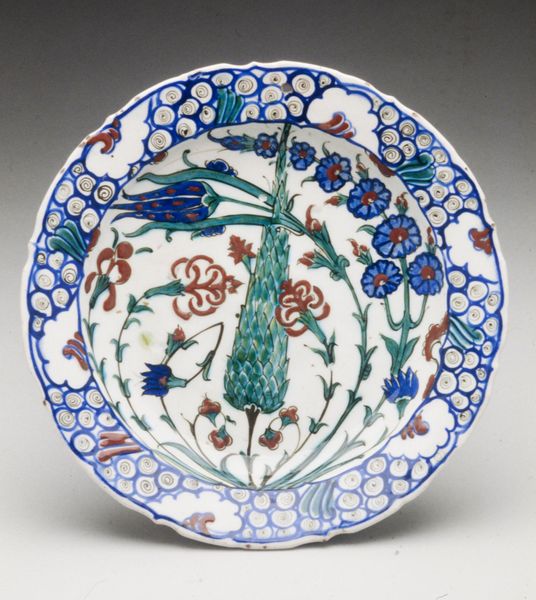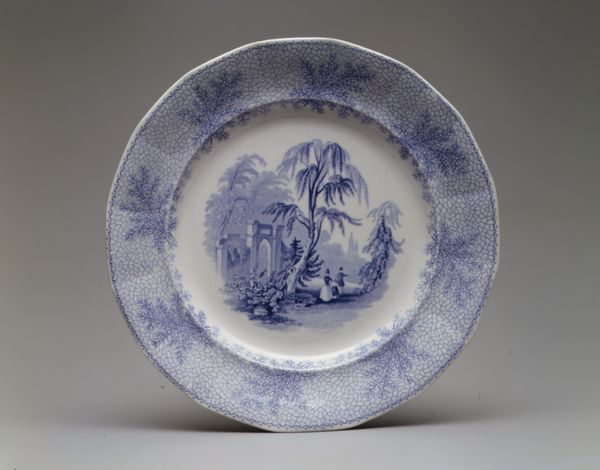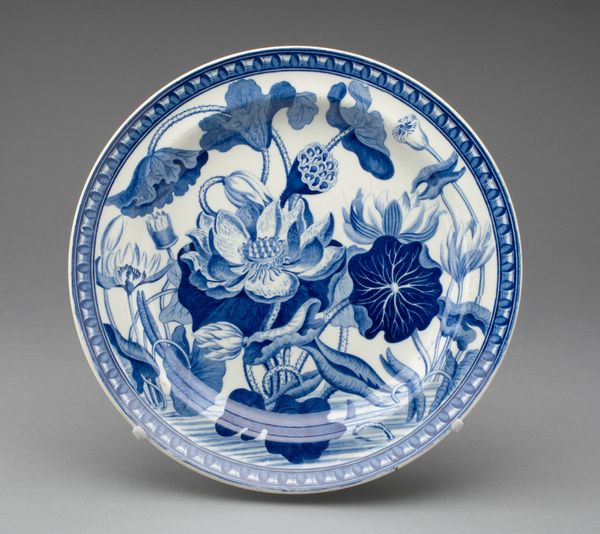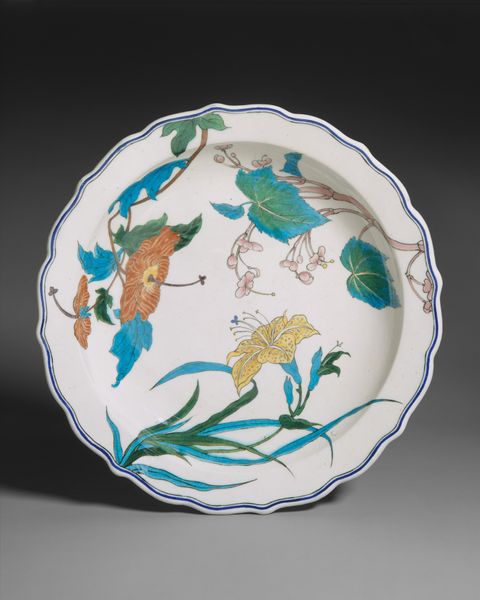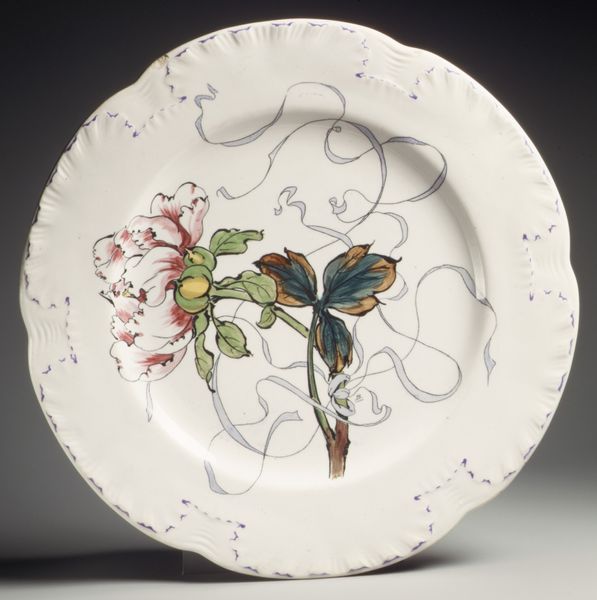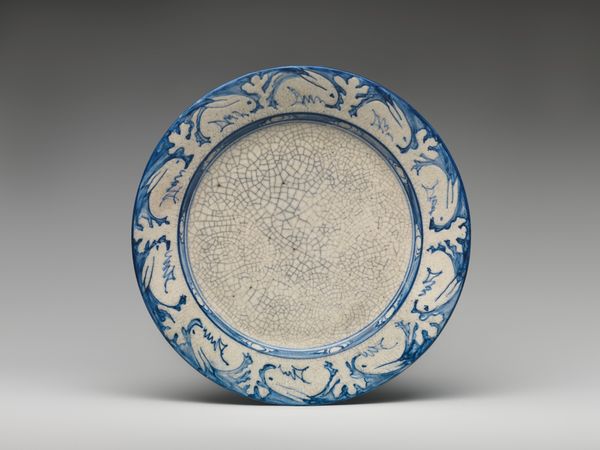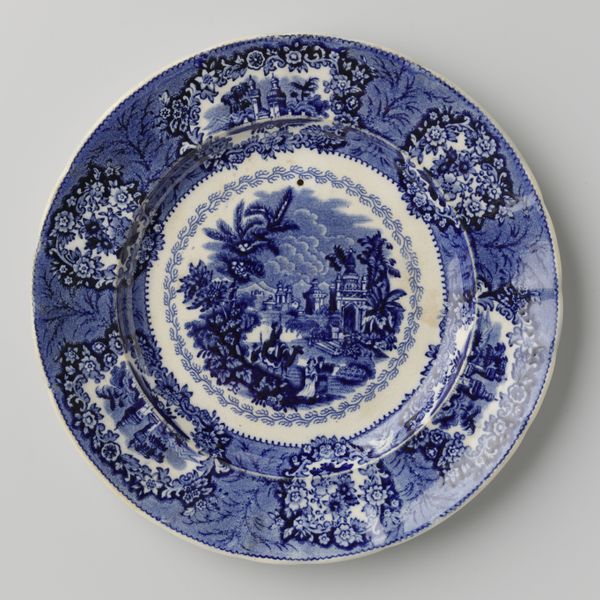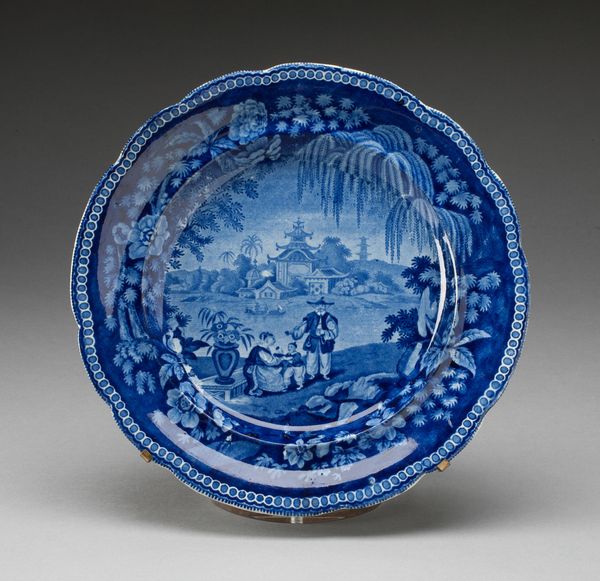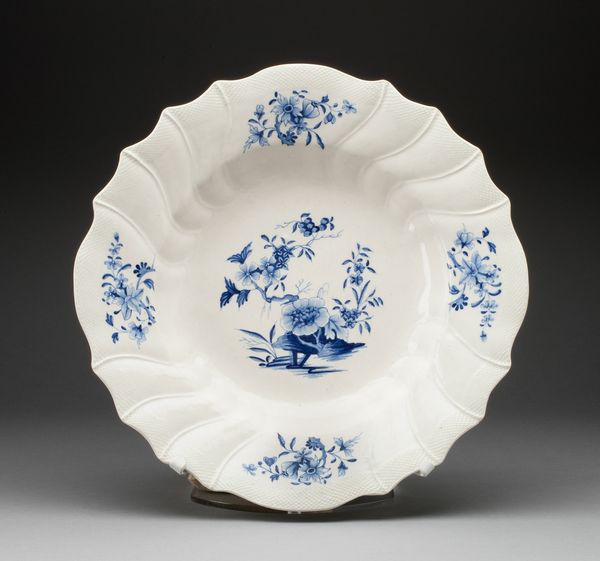
ceramic, porcelain
#
asian-art
#
ceramic
#
porcelain
#
ceramic
#
japonisme
#
decorative-art
Dimensions: Diameter: 10 13/16 in. (27.5 cm)
Copyright: Public Domain
Curator: Here we have a ceramic plate with a "Bamboo and Fan" pattern, created by Minton(s) in 1877. It’s currently held in the collection of the Metropolitan Museum of Art. Editor: It strikes me as quite airy and delicate, yet simultaneously balanced, with a clear tripartite organization of visual elements across its surface. The colors are quite restrained; I would suggest it speaks of an intentioned calm. Curator: Indeed. The composition highlights Minton's embrace of Japonisme. We see a fusion of Japanese aesthetics and European ceramic traditions, quite a popular trend at the time. The inclusion of bamboo, stylized fans, and even small birds evokes traditional East Asian imagery, while the material itself retains a decidedly Western sensibility. Editor: It's intriguing how the fan motif appears twice. A closed geometric one intersecting a sprig of bamboo at one quadrant, and the open fan supporting these beautifully painted birds at the opposite upper left. Note how these opposing quadrants mirror each other, not literally, but by suggesting a dialogue between geometry and the organic. Curator: Precisely. These objects aren’t simply decorative. The fan, for instance, could signify status and refinement, but also the transient nature of beauty itself, something that resonated profoundly within late 19th-century intellectual circles. The bamboo, in turn, represented resilience. These themes resonated especially with Europeans undergoing their own rapid industrialization and social shifts. Editor: Considering its circulation as a commercial product, what implications did these orientalist aspirations carry for the consumer in a time marked by broad colonial endeavors? Did owning such an artifact, even one produced domestically, subtly contribute to prevailing ideologies concerning class and colonial privilege? Curator: These are precisely the sort of contextual issues one must consider. Certainly, objects like this were instrumental in popularizing specific versions of the “Orient.” In that sense, it reflects complex socio-political narratives far beyond its immediate aesthetic appeal. Editor: Agreed. Focusing purely on line and color we miss these important conversations this little plate still wishes to speak. The composition’s tensions are far more than chromatic. Curator: And so it illustrates the ongoing need for art to be understood through many complementary frames, and that includes yours.
Comments
No comments
Be the first to comment and join the conversation on the ultimate creative platform.
